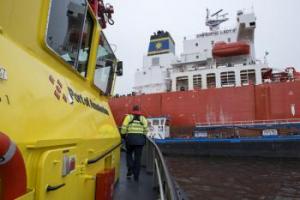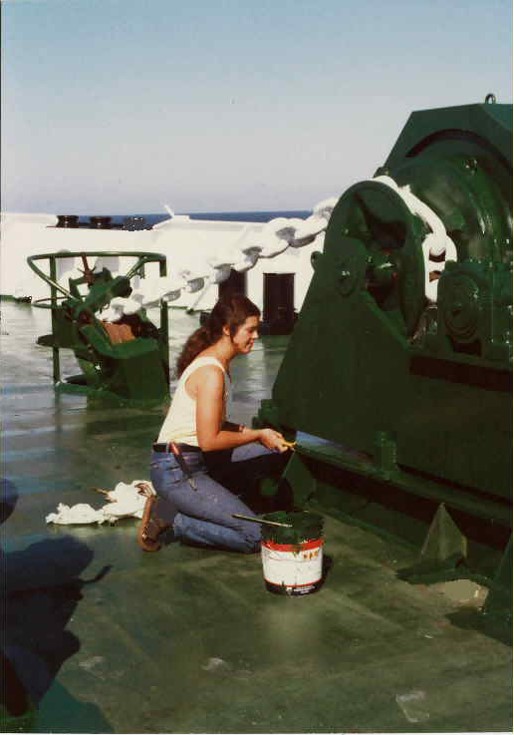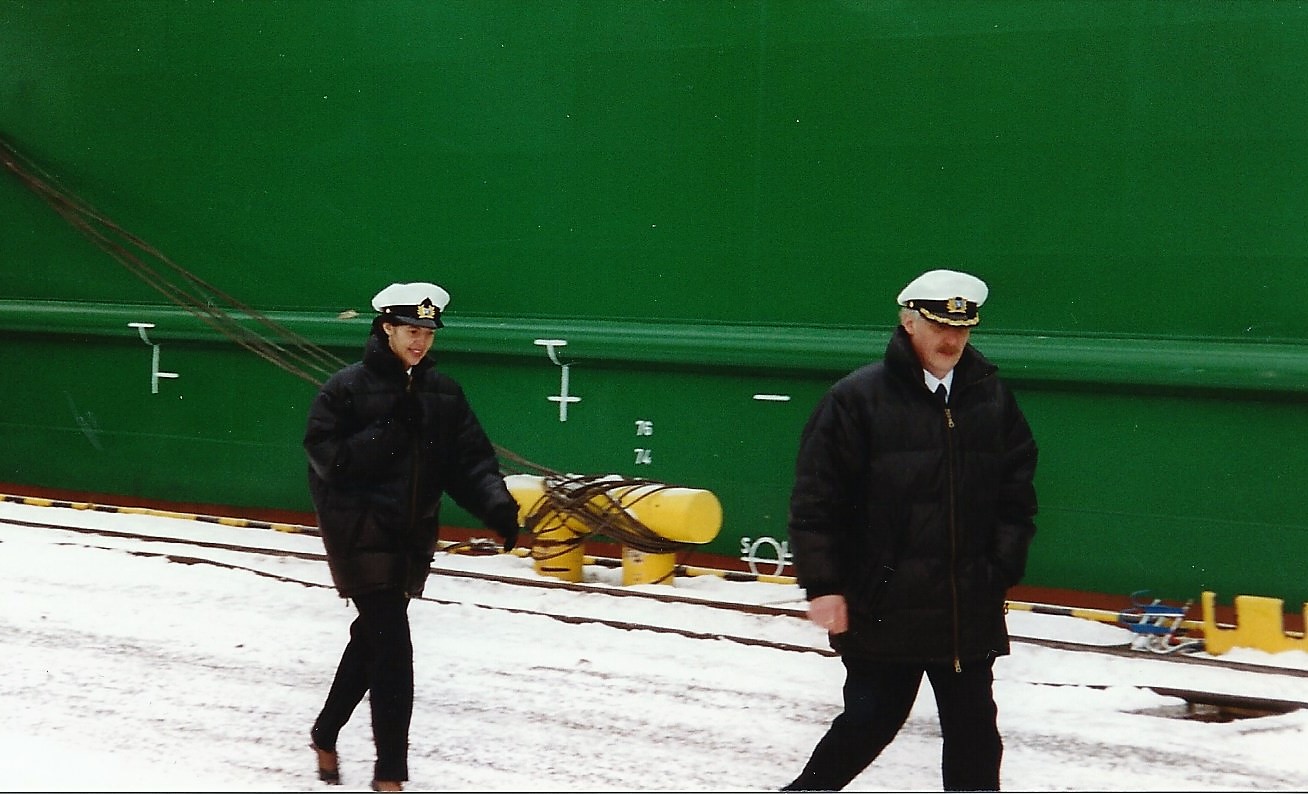Harbour Master
Harbour Masters
Worldwide there are approximately 3,000 merchant ports and the work of the Harbour Master can vary widely from country to country and from port to port even within the same country.

Retired Harbour Master Carita Rönnqvist followed her dreams to enjoy a long career at sea and in port. Here she talks about her experiences during an era of change in the maritime world.
Carita Rönnqvist, a retired Harbour Master from Finland always wanted to go to sea – like her father did before her. She grew up hearing wonderful stories of faraway places and wanted to see for herself.
There was just one problem, she explains. “It was 40 years ago. A woman could not go to sea, it was not possible.”
Thwarted in her ambitions – at least temporarily – Carita instead followed a linguistic path, gaining proficiency in English, Swedish, French, German and Russian alongside her native Finnish. With these skills, she became a teacher of languages at a local high school. She never gave up on her dreams, though and, ten years later, things had changed.
“I was pretty much on my own in my class. It was very rare for women to go on board a vessel at that time.”
“There came a time when there was a lack of people available to perform certain functions. Things began to relax a little with regards to women. All of a sudden, they could join the military or go to sea.”

Carita seized her chance and, leaving behind her academic work, enrolled at seaman school.
“Everyone was a lot younger than me of course, as I had already begun my career. These boys were all 16 and I was 26. I had been a teacher though, so I was used to younger people. It would have been harder for me if I had been younger. I just looked on it as a sociological study,” she smiles.
“I was pretty much on my own in my class. It was very rare for women to go on board a vessel at that time.”
“In Finland you have to start from the bottom and work your way up. I'd come from an academic job and, suddenly, I found myself cleaning toilets for a living!”
Even though, the maritime sectors were progressing, things were still not always easy for women graduating as sailors at the time.
“Even if you'd been to school, it wasn't easy to find work. I remember phoning 30-40 companies before I found a job. After my first job on a super tanker, though, this changed. It was very easy to get the next job because I had the experience.”
Not that gaining that experience was all plain sailing, she relates.
“In Finland we don't have a cadet system. You have to start from the bottom and work your way up. I started on deck. I'd come from an academic job and, suddenly, I found myself cleaning toilets for a living! But I found it nice to be on board and do the deck jobs. You had to do these things in order to become an ordinary seaman.”
“It was unusual. There were not many female Harbour Masters at the time.”
From here, Carita gradually progressed, going first to navigation school and then to master's school to become a Captain in 1996. Finally, in 2004, having juggled her career with raising a family for several years, she decided to come ashore, taking up the role of Harbour Master in the Port of Kokkola – a position she held for 18 years.
“This was also quite unusual. There were not many female Harbour Masters, largely because not many women at the time had had a career at sea.”
“I was a Harbour Master in a small port. I was the only one there who had been to sea. At the IHMA I got to meet colleagues who had had the same experiences and faced the same challenges.”

Soon afterwards, Carita was introduced to the IHMA for the first time.
“I was a member of a dry bulk terminal group, and, in that capacity, I attended an IMO meeting. It was there that I first met someone from the IHMA. A short while later, I received a call from the President of the organisation asking me if I would like to join the IHMA council. They were looking for someone with language capabilities and connections to the IMO. From here, after a while, I was asked to join the executive council (EXCO).
“It has been really interesting. I was a Harbour Master in a small port. I was the only one there who had been to sea. At the IHMA I got to meet colleagues who had had the same experiences and faced the same challenges as I had.
“I had the opportunity to work within every field where a marine expert was needed including the environment, security, safety, sales and marketing, infrastructure, quays, fairways, legislation, dealing with pilots, tugs and icebreakers, military drills and other things. It brought a lot of diversity to my work.”
“The IHMA has always been very open. They don't ask me questions because I'm a woman. They ask me questions because I am a Harbour Master. It doesn’t matter where you are from, what gender you are. What matters is that you are dealing with the same issues as a Harbour Master.”
Back then, when the maritime industry was only just beginning to open up to wider gender diversity, Carita says that the IHMA was very forward thinking.
“The IHMA has always been very open. They don't look at what gender you are. They don't ask me questions because I'm a woman. They ask me questions because I am a Harbour Master. The IHMA sees that the more diversity you have in the organisation, the more experience you get. What I've experienced in the organisation is that it doesn’t matter where you are from, what gender you are. What matters is that you are dealing with the same issues as a Harbour Master.”
Though now retired from her role as Harbour Master, Carita continues to sit on the IHMA EXCO, having been re-elected to her position in June last year. She intends remain involved in the organisation as long as possible and will complete her final term in 2024.
The International Harbour Masters Association (IHMA) and the Port of Rotterdam Authority are pleased to announce the 15th International Harbour Masters Association Congress, to be held from 09–12 June 2026 at Theater Zuidplein in Rotterdam.
Naresh Sewnath, Senior Harbour Master at Transnet National Ports Authority (TNPA) in South Africa’s Port of Durban, began his maritime career back in 1988. He started out as a cadet with TNPA (then known as South African Transport Services (SATS).